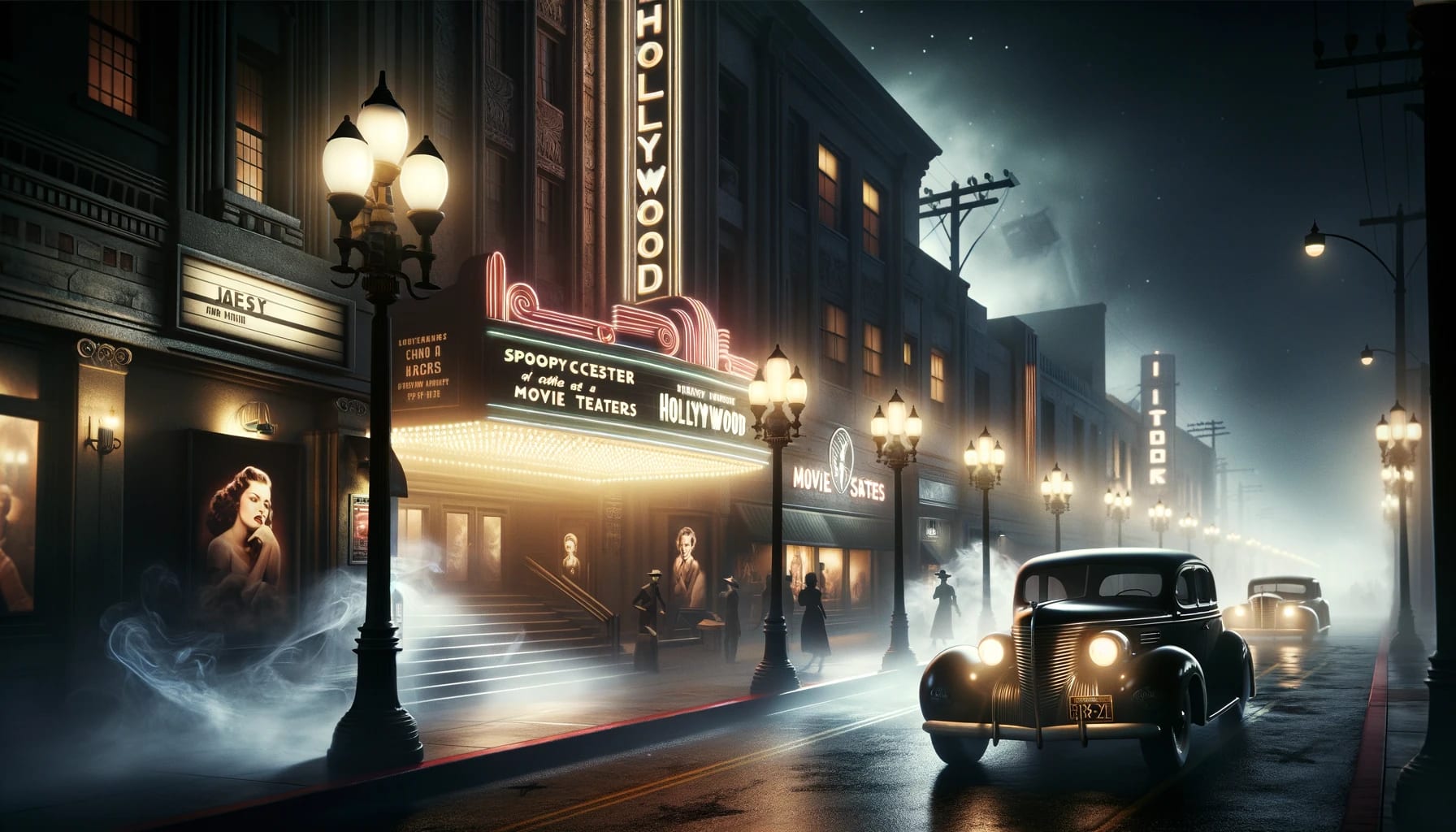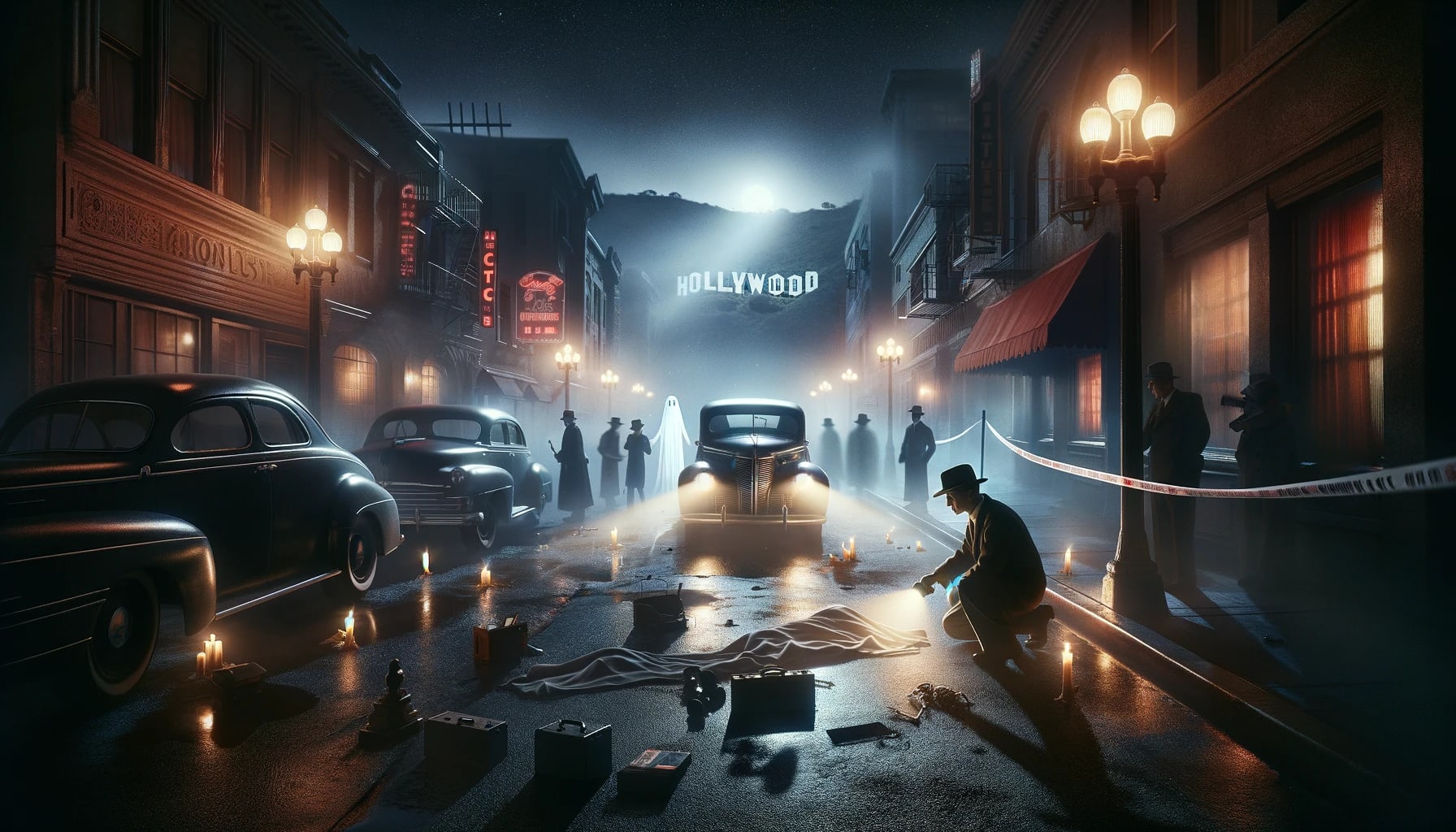Located on Hollywood Boulevard near Vine Street, the Hollywood Pacific Theatre (originally the Warner Theatre) represents both the grandeur and tragedy of Hollywood history. Its Art Deco facade, once gleaming and inviting, now stands weathered and closed. The marquee that once announced the latest films is dark. But according to urban explorers, security guards, and paranormal investigators who have ventured inside, the theatre is anything but empty. The spirits trapped within this decaying palace seem unable or unwilling to accept that the final credits have rolled.
The Glory Days
When the Warner Brothers circuit opened the theatre in 1928, it represented the cutting edge of cinema design. The Art Deco architecture, considered ultra-modern at the time, featured elegant geometric patterns, luxurious materials, and state-of-the-art projection and sound equipment. The theatre seated over 2,000 people and regularly hosted Hollywood's elite for premieres and special events.
Throughout the 1930s and 1940s, the theatre thrived, showing first-run Warner Brothers features to packed houses. Stars attended premieres, fans lined up around the block, and the Pacific Theatre was a jewel in Hollywood Boulevard's crown. For many, it represented the American dream—glamour, success, and the magic of the movies.
Decline and Abandonment
Like much of Hollywood Boulevard, the Pacific Theatre began to decline in the 1960s and 1970s. The neighborhood deteriorated, multiplex cinemas drew audiences away, and the grand single-screen palace became economically unsustainable. The theatre changed hands several times, was renamed, and eventually began showing adult films and second-run features.
By the 1980s, the Pacific had become a shadow of its former glory. Various attempts to revive or repurpose the building failed. In 1994, the theatre closed for the final time. Since then, it has stood largely abandoned, falling into disrepair while developers and preservationists debate its fate. The building has been used occasionally for filming and special events, but mostly it sits empty—at least of the living.
The Tragedy of Decay
The abandoned theatre has suffered water damage, vandalism, and the inevitable decay that comes with neglect. The Art Deco splendor still visible beneath the damage makes the deterioration even more heartbreaking. Ornate plasterwork crumbles, the grand chandelier hangs precariously, seats rot in rows, and the screen that once showed Hollywood's finest now bears water stains and tears.
This physical decay mirrors the spiritual atmosphere inside. Paranormal researchers theorize that the theatre's fall from glamorous showplace to abandoned ruin has trapped certain spirits—those who loved the theatre in its prime and refuse to acknowledge its current state, or those who died during the building's later, darker years.
The Phantom Usher
The most commonly reported spirit is that of an usher who worked at the theatre during its golden age. Multiple witnesses describe him as an elderly man in a vintage usher's uniform, complete with flashlight, appearing in the aisles as if guiding patrons to their seats.
Urban explorers and security personnel report:
- A flashlight beam moving through the darkened auditorium when no one else is present
- The sound of footsteps in the aisles
- A polite voice asking 'How many in your party?'
- The feeling of being escorted by an unseen presence
- The scent of old cologne and mothballs associated with vintage uniforms
One urban explorer reported being told 'This way, please' and following the flashlight to a specific seat, only to discover when he turned around that he was completely alone. The phantom usher seems to be eternally working, unable to accept that there are no more patrons to serve.
The Weeping Woman
Multiple witnesses have reported hearing a woman crying in the ladies' restroom or the upper balcony. The sobbing sounds heartbroken and desperate, echoing through the empty theatre. When investigators search for the source, they find no one.
Some believe she's the spirit of a young woman who received devastating news at the theatre—perhaps the end of a relationship, the death of a loved one, or news that crushed her Hollywood dreams. Others speculate she might be someone who died in the theatre during its later years, when the neighborhood had become dangerous.
The crying is most often reported in the late evening and is described as profoundly sad—witnesses often report feeling overwhelming grief when they hear it, as if the woman's sorrow is contagious. Some investigators have captured EVPs that include the phrase 'I can't go home' repeated between sobs.
The Phantom Audience
Perhaps the most spectacular phenomenon reported at the Pacific Theatre is the sound of a full audience—hundreds of people laughing, gasping, and applauding in response to a film that isn't playing. Security guards and urban explorers describe entering the auditorium to investigate sounds of activity, only to find the room empty and silent, the phantom audience disappearing the moment someone enters.
This residual haunting seems to replay moments from the theatre's glory days—the psychic imprint of thousands of audiences who filled these seats over decades. Witnesses report:
- The rustle of programs and candy wrappers
- Murmured conversations
- Laughter in response to comedy
- Gasps during dramatic moments
- Enthusiastic applause at a film's conclusion
- The sound of people standing and gathering belongings
One witness reported hearing a full audience react to what sounded like a film score, complete with gasps during tense moments and relieved sighs during resolution, even though the projection booth is empty and the screen is blank.
The Man in the Projection Booth
The projection booth, which once housed the latest in film technology, is now empty except for some abandoned equipment. However, witnesses report regular activity there:
- The whir of film projectors that no longer exist
- The smell of burning film (a common occurrence in early cinema)
- A silhouette visible in the projection window, backlit as if working
- The feeling of being watched from the booth while in the auditorium
- Equipment moving or found in different positions
Urban explorers who have accessed the booth report an oppressive atmosphere, a sense that they're intruding on someone's workspace, and occasional aggressive responses—being pushed, having equipment failures, or experiencing sudden violent headaches. Some believe the projectionist's spirit is protective of his booth and resents trespassers.
Shadow Figures
Multiple witnesses report seeing shadow figures throughout the theatre—dark, human-shaped silhouettes that move deliberately through the building, apparently following their own agendas. Unlike the identified spirits (the usher, the weeping woman), these shadow figures seem to be aware of the living and sometimes interact with them.
Reports include:
- Figures sitting in seats, visible only in peripheral vision
- Shadows crossing the stage as if moving from wing to wing
- Dark shapes blocking doorways before dissipating
- Groups of shadow figures appearing to congregate in the lobby
- Shadow figures that seem to follow urban explorers through the building
Paranormal investigators theorize these might be the spirits of people who frequented the theatre during its decline—when it showed adult films, served as a gathering place for Hollywood's marginalized, or when the dangerous neighborhood made the theatre a place where violence occasionally occurred.
The Phantom Organist
During its early years, the Pacific Theatre featured a mighty Wurlitzer organ that would rise from beneath the stage to provide music before and during silent films. Though the organ was removed decades ago, witnesses report hearing organ music emanating from the empty stage area.
The music is described as:
- Classical compositions popular during the silent film era
- Dramatic accompaniment as if scoring an invisible film
- Sometimes melancholy and mournful
- Other times triumphant and celebratory
- Always authentic to the period, never modern
Photographers have captured strange orbs and light anomalies in the area where the organ platform would have been. Some investigators have recorded EVPs in this area that include the sound of organ keys being pressed and the mechanical whir of the organ rising from its pit.
Paranormal Investigation Evidence
Despite the building's secured status, several paranormal investigation teams have obtained permission to study the Pacific Theatre. Their findings include:
- Hundreds of EVPs, including conversations, names, and phrases like 'The show must go on'
- Electromagnetic field readings that spike dramatically throughout the building
- Temperature anomalies, particularly cold spots in the auditorium and balcony
- Full-body apparitions captured on video
- Photographs showing orbs, mists, and distinct human shapes
- Motion sensors triggered throughout the building when no one is present
- Unexplained footprints appearing in dust on the stage
- The scent of period-appropriate perfume, popcorn, and other smells associated with vintage cinemas
One investigation team captured video of what appears to be a full audience in the seats, visible for several frames before disappearing. Another team recorded audio that includes a full orchestral score playing, matched to the timing of 'The Jazz Singer'—one of the first successful talking pictures, which would have played at the theatre during its opening years.
The Pacific Theatre Today
The Hollywood Pacific Theatre is not open to the public and is secured against unauthorized entry. Trespassing is illegal and dangerous—the building is structurally unsound in places, contains hazards, and is regularly patrolled. However, the building's exterior can be viewed from Hollywood Boulevard, where its Art Deco facade stands as a reminder of Hollywood's glory and a monument to dreams that faded.
The theatre's fate remains uncertain. Various proposals for renovation, conversion, or demolition have been debated for years. Preservationists fight to save the building, developers see opportunity, and the spirits within seem to wait, trapped between past glory and an uncertain future.
If the theatre is ever restored and reopened, one wonders if the spirits will finally be at peace—or if they'll be thrilled to once again have a living audience with whom to share the eternal show that plays in their memories.

Where faded glamour conceals active spirits

Empty seats where phantom audiences still applaud



